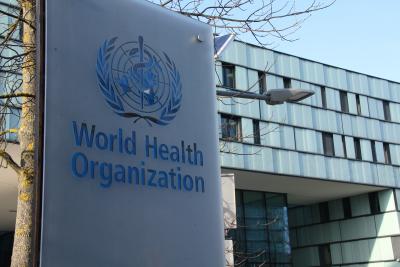New Delhi, Nov 16 : The World Health Organisation is set to launch a global strategy to eliminate the menace of cervical cancer, which is the second most common cancer in the Indian female population.
“On November 17, following the close of the 73rd World Health Assembly, WHO will mark this historic announcement and officially launch the elimination strategy. The moment has arrived for an ambitious, inclusive strategy to accelerate eliminating cervical cancer as a public health problem,” it said.
A WHO official told IANS that the strategy which would be unveiled on Tuesday was being prepared since 2018 under guidance of the organisation’s Director General, Dr Tedros Adhanom Ghebreyesus, and has been finalised after many countries agreed to it.
The WHO has recommended targets for 2030 to accelerate the progress towards elimination of cervical cancer where it suggested the countries to strive to reach the goals of vaccinating 90 per cent of girls of 15 years of age with HPV vaccine and screen 70 per cent of women at the age of 35 and 45 years.
The All India Institute of Medical Sciences (AIIMS) informed that the Union Health Ministry had launched a screening programme for cervical cancer.
“The present strategy of visual inspection with acetic acid (VIA) has been rolled out in many districts. However, training of health workers, ensuring linkages between primary, secondary and tertiary level centres and access to services have posed challenges that are unique to every state. Public private partnerships are ongoing to further capacity building and implementation research,” an AIIMS spokesperson said.
The AIIMS also said that an indigenous HPV vaccine has been developed which is in Phase-3 trials now and is expected to be available in the near future.
“The vaccine is developed by the Serum Institute of India in partnership with the Department of Biotechnology. It is expected to roll out by next year,” an AIIMS official told IANS.
The vaccine was launched back in 2006 and available globally. In India, it is available since 2009. “However, despite its availability, the vaccine is not taken up very well in India. Even the production is not adequate,” said Prof Neerja Bhatla, of AIIMS’ Department of Obstetrics and Gynaecology.
She also hoped that the vaccine would be included in the national programme once its indigenous version is rolled out. “Let’s hope it (vaccine) gets ready by the next year,” Bhatla said.
The current rate of disease burden is 14 patients per 100,000 population. “Our goal should be reduce it to less than 4,” she added.
Bhatla also informed that the cancer is mostly seen after 50 but the pre-cancer comes 10 to 15 years before. “So it will be prudent to get screened after 30 year of age so that the cancer is detected timely and treated,” she added.
Meanwhile, the AIIMS also said that it will hold a workshop with stakeholders on the launch of global strategy against cervical cancer. “The deliberations will focus on new developments in cervical cancer elimination that are changing the landscape by including diverse stakeholders in prevention, treatment and palliation,” it said.
Disclaimer: This story is auto-generated from IANS service.

